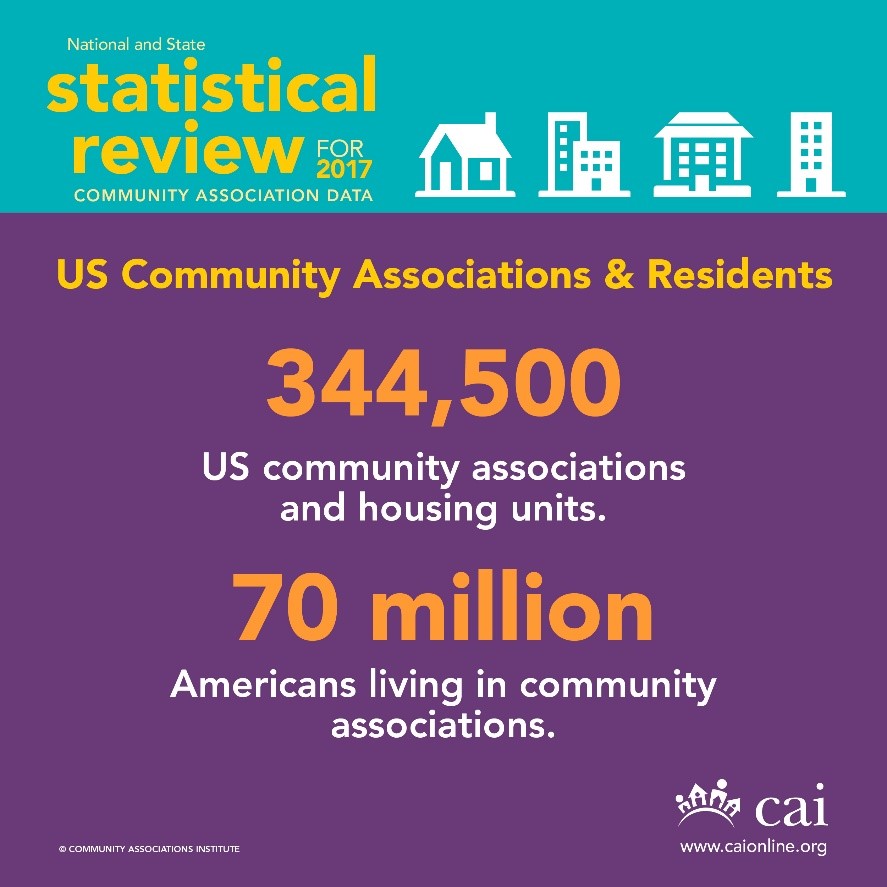70 million Americans now living in community associations, according to new statistics by the Foundation for Community Association Research
Sixty-one percent of all new housing built for sale is in a community association, also known as planned communities (e.g. homeowners associations, condominium communities, and housing cooperatives), according to the 2017 National and State Statistical Review for Community Association Data, published by the Foundation for Community Association Research (FCAR).
 The research is produced by the Foundation in conjunction with Community Associations Institute (CAI), the leading international authority in community association education, governance, and management.
The research is produced by the Foundation in conjunction with Community Associations Institute (CAI), the leading international authority in community association education, governance, and management.
For more than 40 years, the Foundation has published the National and State Statistical Review which compiles community association data. In 1970, there were 10,000 community associations with approximately 2.1 million residents. Today, 70 million residents currently reside in the nation's 344,500 community associations.
Florida continues to lead the nation's community association housing model with 48,000 associations, and home to 9.7 million residents. California is the country's second highest state for community associations with 45,900 communities followed by Texas (20, 00), Illinois (18,650), North Carolina (13,950), and New York (13,850).
Additional results show the value of homes in community associations is nearly $5.8 trillion, and $90 billion in assessments is collected annual from homeowners to fund essential maintenance.
The report further details top reasons for the growth of community associations:
▪ The Value of Collective Management. Americans largely have accepted the collective management structure of community association living where association boards are comprised of elected homeowners who voluntarily serve their communities. The research shows there are 50,000–55,000 community association managers in the U.S.
▪ Privatizing Public Functions. With many local municipalities facing fiscal challenges, communities are often created with the stipulation that the developer will create an association that will assume many responsibilities that traditionally belonged to local and state government (e.g., road maintenance, snow and trash removal, and storm water management). According to the study, $25 billion contributed to association reserve funds for the repair, replacement, and enhancement of common property (e.g., swimming pools, elevators, resurfacing streets).
▪ Expanding Affordable Housing. There has been a persistent effort to increase the percentage of homeowners in America, and since the 1960s, condominiums have tended to serve as lower-cost entry housing, especially for first-time buyers. Condominium communities account for 38–42 percent of the reported total for community associations.